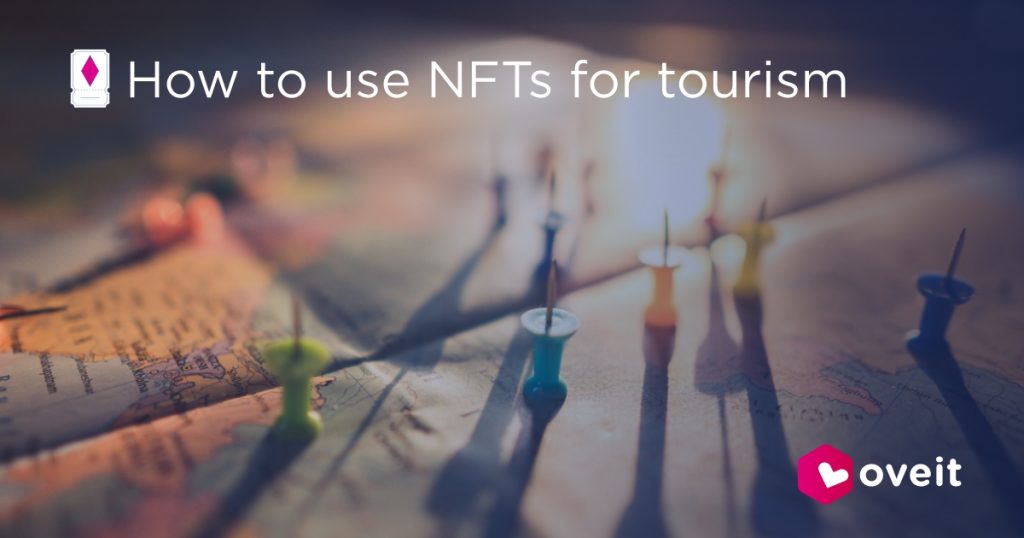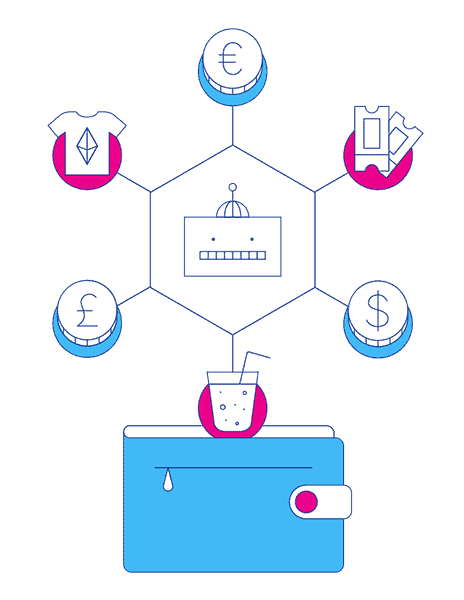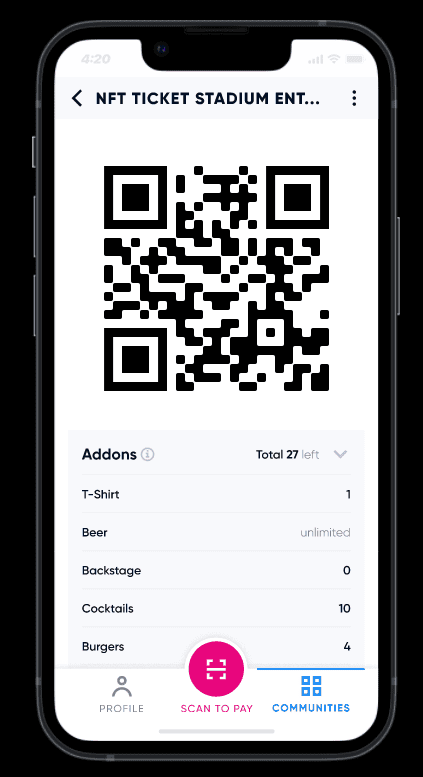
Did you know that almost 1 out of 12 jobs out there is in the tourism sector? And although the industry took a hit due to the pandemic, things are rapidly changing for the better. With so much weight in the global GDP, eyes are always focusing on what technologies can be used to accelerate growth. So let’s take a look at how to use NFTs for tourism to create better experiences. For all parties involved: travelers, businesses, and local communities.
Yes, those “pretty pictures” can be extremely useful in many fields – and tourism is definitely one of them.
NFTs are one of the hottest subjects for 2021 and 2022. While many of the discussions are focusing on the value of NFT artworks and how much they have been sold, this technology is much deeper than that. For tourism, NFTs’ value stands in their functionality more than it stands in their collectability. But the latter will not be eliminated from this discussion as it has an important role here as well.
But before going further and focusing on the benefits NFTs bring to the travel sector, let’s reiterate what NFTs are and what makes them so powerful.
What are NFTs?
NFTs (non-fungible tokens) are unique digital records that can’t be altered or changed. They are the representation of a physical or digital good and the code itself holds proof of the item’s ownership and history.
NFTs are stored on the blockchain, and cannot be altered or hacked (or, at least, it’s incredibly hard to). But at the same time, the network’s members have access to this digital record, and information is passed with each transaction, transforming it into a powerful tool.
Travel is all about the experience. But at the same time, the travel industry relies on technology more than it’s seen to the eye. Until now, the technologies would solve particular issues and would rarely actually be interconnected. The result: fractionated data and fragmented experiences. But this is about to change.
Using NFTs for marketing
Powered by the buzz created around them, NFTs are a great marketing tool used by companies around the world. The uniqueness of these digital artworks, powered by their secure public record, makes them very appealing to collectors.
An example here offers Marriott International and its “The Power Of Travel” campaign. The company partnered up with digital artists to create three unique artworks. The winners were picked randomly and won the NFTs together with 200,000 Marriott Bonvoy points that could be used within the hotel chain.
These campaigns are extremely efficient for newsjacking, bringing the event in front of large audiences. But as we can see from this example, the NFTs can give exclusive access to multiple benefits, or rewards, and this takes us to the next benefit of using NFTs for tourism.
Loyalty programs as NFTs for tourism and hospitality

With high acquisition costs and thin profit margins, recurring customers are extremely important in tourism. And the existing loyalty programs can be powered up with the help of innovative technologies like NFTs.
Similar to an existing loyalty card, an NFT can be used to accumulate brand points within the ecosystem. Only this time the NFT is available for resale in a transparent and safe manner, and the issuer can take a cut from these transactions in the form of royalties.
Unlike traditional loyalty programs, an NFT can be the gateway towards multiple ecosystems, allowing businesses to collaborate. Who benefits from this? Every stakeholder. Customers can use the same “loyalty card” in multiple locations. Businesses have access to large audiences. Local authorities can jump in to create customer journeys, acting like the binder that holds everything together.
Gamification through NFTs
Gamification is one of the most important aspects of a vacation. Except if you’re planning to lounge by the pool for a full week – something we all dream of once in a while. But let’s see how to use NFTs for gamification in tourism.
Imagine going into a new city and visiting some local museums. The local authorities can issue an NFT ticket that gives you access to all of the local attractions.
Each time you use it, the system records the information. Once you visit 3 locations, you automatically receive an add-on granting you access to a local play. Visit 5 locations and win a “proof-of-travel” NFT that gives you a 50% discount on the local festival. NFTs are based on smart contracts, remember? We can now easily create the experiences we’ve always dreamed of for our guests.
NFTs are the perfect tool that mix gamification and loyalty programs. Each action taken by the tourist can be followed by a “reaction” within the system. You can create different “activity maps” that unlock access to unique perks. And each of these actions can result in a unique NFT for your guests to collect. As we have mentioned at the start of this article, NFTs prove their value through their utility and collectability.
Collect travel memories through NFTs
How many magnets do you have on your fridge? I for one have quite a few – and these are just the ones that survived multiple moves and various accidents. What if instead of filling up your fridge with a limited number of magnets you could fill up your digital wallet with an unlimited number of NFTs? (at least) one for each place you have ever visited.

The collectible trait of NFTs makes them perfect for those looking to collect memories from each of their trips. You can create your own collections and store them safely. Each time you want to revisit those memories, they’re just a few clicks away.
What makes them even more valuable is the impact they can have on the local economy. These artworks can be inspired by local heritage and created by local artists. And the smart contract that governs them can be set up so that a small cut returns into the local economy each time a piece is bought. Perpetual royalties to support the local economy.
And this takes us to the next benefit. One that is too complex to be fully covered within an article. But the one that will forever change the tourism industry for the better.
Supporting the local economy through NFTs
Royalties can be set up with NFTs, meaning they can be programmed so that multiple parties benefit from a payment. You buy a collectible NFT, and x% goes back to the local creator. Or to a local organization supporting different causes. If you pay $2 for such an item you may be inclined to think that a 5% cut going back to the community doesn’t mean much. But the power stands in numbers.
And things can be way more complex than this. As we said at the beginning of this article, NFTs are digital records that can represent physical or digital goods – basically anything we can think of. Even share within an art gallery owned by the local community. Or a restaurant. Local businesses can rely on NFTs to attract private investments from their peers.
The smart contract will enforce rightful payments toward each party that supported the business. This is a new, easier way for local communities to stand together and deliver services and products to visitors.
Booking and registration through NFTs

You probably already know how NFTs are used for ticketing, not let’s take a look at how the hospitality industry can use them for bookings as well. Ca Di Dio, a hotel in Venice, leveraged the technology before opening its doors to tourists. The NFT issued by the hotel included a stay and its most prestigious room, a private dinner, and a boat transfer to the hotel. This project implemented by Tripscommunity is a great example of the utility that can be held by NFTs. For tourism, this means that customers can book their stay through NFTs, but also purchase additional services and experiences as well.
The booking can include access to a spa, a private dinner like in the above example, and even access to a local event. All the information is securely stored on the blockchain, making the transaction transparent. And what happens if the client is forced to cancel the trip? This NFT can be easily resold by the initial owner, automatically updating all the information for all parties involved. No need to cancel the package and issue a new one – the entire experience can be transferred to a new owner while the authenticity of the ownership and of the transaction are guaranteed by the network.
NFTs – the new way of paying
You read that right. NFTs can be a payment tool and tourism can benefit from this. We’ve just seen the multiple values it can store, and purchasing power is no different. Consider it as a preloaded debit card, governed and secured by transparent rules. But unlike your typical debit card, this one is also your hotel booking and your loyalty card.
There are two main issues that stop people from spending when traveling abroad:
- Exchange and ATM withdrawal fees
- Vendors are not onboarded into the banking system and tourists cannot pay with their credit or debit card. As many westerners are sometimes reserved in using local ATMs due to potential fraud and/or high fees, travel budgets remain unspent.
And as hard to believe as this may be, using NFTs as a payment tool solves both of them. You’re no longer dependent on one single system that processes the information and sets up the rules. You can use your digital wallet anywhere in the world and any business, no matter how small, can accept payments from you. Fast, secure payments, are essential in tourism.
Final words on how to use NFTs in the tourism sector
Have you read this article as a list of independent benefits NFTs (can) bring to the tourism sector? Now imagine that each benefit is part of the same experience. One NFT to rule them all.
You hear about hotel marketing stays through NFTs. You take a look and see that you actually always wanted to visit that city, so you book your stay. And here is where the magic starts. From here on, imagine that you are using that hotel reservation in the form of an NFT – and that the above subtitles are checkpoints throughout your journey. This is the future of travel.
At Oveit, we’re helping event organizers create immersive experiences through our NFT ticketing tool. But we feel that NFTs have the power to transform tourism, for travelers and local communities alike.

